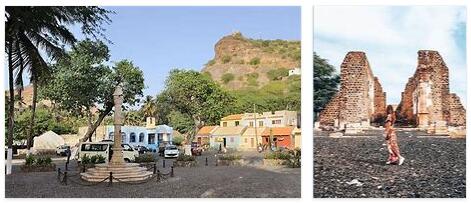Sudan Archaeology
Sudanese archeology was, like that of Egypt, partly conditioned by the specific event of the flood caused by the new Aswān dam for the region approximately between the IIa and the IIIrd cataract. Sudanese Nubia was therefore the focus of particularly intense activity (see nubia) and the discoveries that have been made there are among the most important (so for the Faras paintings, complex evidence of a local Byzantine-inspired art to be dated between the 6th and 11th centuries). Outside the flood zone, the Sudan offers elements of a number of cultures that have been explored in various ways in recent years. Neolithic settlements have been studied around Khartoum whose connections with Saharan cultures have been sought, which according to some depend on them, according to others they condition them. For the historical age, the oldest and most significant culture in the northern area is that of Kerma, so called by the great cemeteries and monumental buildings of the locality of that name at the III rt cataract. Relations with Egypt are certain, but it is certainly also the local character in the splendid pottery, in the barbarian funerary rituals, in the use of materials unknown to Egypt (mica, ostrich egg shell, etc.). Today in Kerma there is a tendency to see the center of a sufficiently extended and uniform political power, and the areas in which artifacts typical of this moment have been found are numerous to the North and S of the “capital”. The “Egyptian” period, ie that of the New Kingdom in which the northern part of the country was under direct pharaonic control (16th-13th century BC), was illuminated by the excavations of Egyptologists in the fortresses that dot the itinerary on the Nile: Buhen, Mirgissa, Semna, Aksha, Ashkut (all in the area threatened with flooding), who gave a mass of news about military architecture and Egyptian colonial life. But also the temples have been explored, in particular that of Soleb, all of Amenofi III, scrupulously studied by an Italian mission with French collaborators. The fact that the temple has not undergone subsequent renovations makes it particularly instructive and paradigmatic. Important for the epigraphic materials are the temples of Kawa, active from the 18th dynasty onwards, excavated for a long time but studied in recent years. Tombs of local princes were discovered at the 2nd cataract: they show the weight of Egyptian influence during the 18th dynasty. Of the period in which the kings of Napata conquered Egypt, reuniting it with their Sudanese kingdom in political and cultural unity (8th-7th century BC), there is little news, if not perhaps the identification of the tomb of one of these kings, Taharqa, in the Sedeinga necropolis. Napata itself has recently been the site of an Italian archaeological mission that has just begun work on it. Much richer the news in the Meroitic period, both for explorations and for studies. The German excavations at Musawwarat el-Sufra have added a new and important Templar monument to the known ones, and have started historical, linguistic, chronological, historical-religious, sociological researches that are changing our knowledge of the Meroitic world. The data is collected and used with very modern techniques by the Paris computer center. The cultures of the “group x” and the late-ancient and medieval Christian ones are rather limited to Nubia (v.), And there is no need here to make more of them than a mention, even if they are the ones that, with the Meroitic, they have progressed more rapidly in recent years. But more important, by far, is the attitude of the Sudanese archaeological authorities who, after independence, took the lead in the research by framing the activity of not many foreign missions (French, German, American, Polish, Italian). The “national” archeology is Meroitic rather than Pharaonic as it had been in the past, and at the same time an interest is developing in regions that have hitherto been rather out of exploration, such as the Sennar or the Dārfūr, for which extensive preliminary reconnaissance work. This broadening of the horizon can lead to a better evaluation of the function of the Sudan as a way of penetration and connection between the Mediterranean world and the more typically African one.



